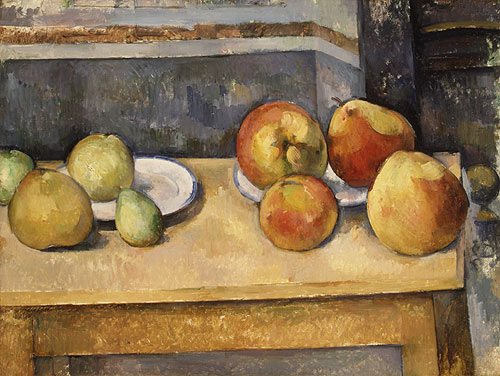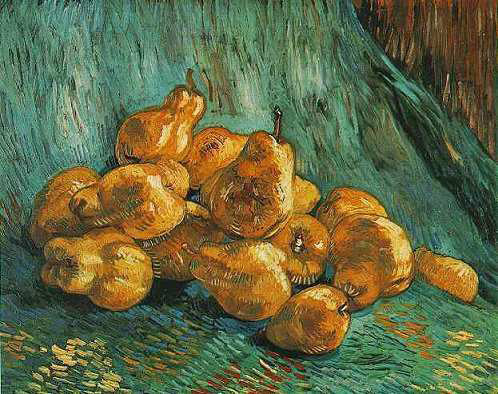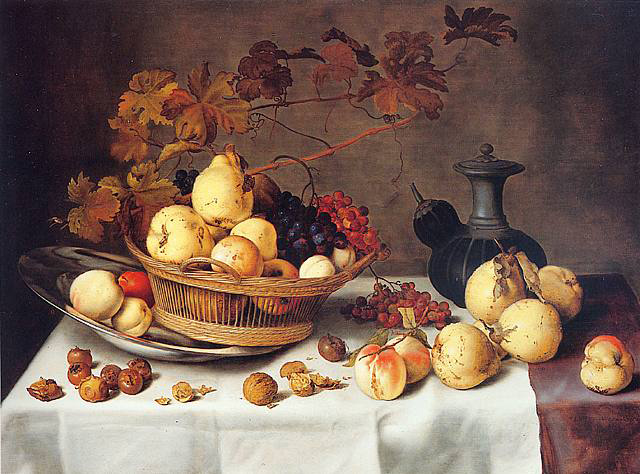Agriculture in Art
Georgia O'Keefe
 Two Pears, 1921
Two Pears, 1921
Georgia O'Keeffe was raised on a dairy farm in rural Wisconsin. This gave her a love of nature that is reflected in her art. Her still life paintings are among the best loved of her works. One of the most influential and innovative artists of the 20th century, O'Keeffe was the first woman to have her own exhibition at New York's Museum of Modern Art.
By the mid-1920s O'Keeffe began making large-scale paintings of natural forms at close range, as if seen through a magnifying lens. With her still life paintings, she took a very realistic look at her subjects but enlarged them so massively that their details became unfamiliar. In this way she combined abstract art with representational art. O'Keeffe told her students to find art in the everyday. Her art is an emotional response to the things around her. She concentrated on colors and shapes that corresponded to her feelings.
Still Life Painting
A still life is an ancient form of painting in which mostly inanimate objects are depicted in an artificial setting. Still life images have been found on the interior of ancient Egyptian tombs. The ancient Egyptians believed food objects and other items depicted on the walls of the tombs would, in the afterlife, become real and available for use by the deceased. Still life paintings make it easier for the artist to arrange design elements within a composition.
Discussion and Activities
- Describe the colors O'Keeffe uses in this painting. What is the dominant color? What color gets your attention? Compare and contrast the colors in one pear with those in the other pear.
- O'Keeffe used color in her paintings to express her feelings. How do the colors used in this painting make you feel?
- Name some adjectives that describe the pears in this painting.
- Describe the background. How does the choice of background affect the painting.
- Describe the use of shadow and light. Where is the light coming from?
- Are the pears ripe? Do they look good enough to eat?
- Describe the shapes without using the word "pear." Discuss her use of lines and shapes.
- Discuss the effect of using two pears rather than just one pear or more pears.
- O'Keeffe was known for combining representational, or realistic art with abstract. Examine what is realistic and what is abstract about this painting.
- Compare and contrast O'Keeffe's painting with the other three paintings of pears shown below and with the scientific print from the USDA Pomological Watercolor Collection.
- Provide pears and other fruits and objects so students can create their own still life works of art.
More Resources
- Smart Board Activity: Appreciation of Pears (Need help?)Please be patient with us as we learn how to use this new technology.
You must have Smart Notebook software installed on your computer to open Smart Board activities. If you have Smart Notebook software and are using Internet Explorer, you may get a message telling you the activity cannot be opened. In this event, save the activity to your hard drive. Your browser will save it as a zip file. Simply change the "zip" in the file name to "notebook," and you should be able to open it.
Thank you for your patience.
Smart Board Acitivity page
Vocabulary
- abstract—using elements of form (as color, line, or texture) with little or no attempt at creating a realistic picture
- representational—something that looks like something else
- still life—a picture of an arrangement of objects




